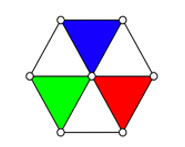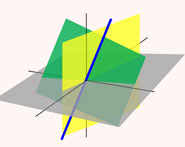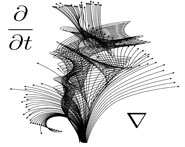


 تاريخ الرياضيات
تاريخ الرياضيات
 الرياضيات في الحضارات المختلفة
الرياضيات في الحضارات المختلفة 
 الرياضيات المتقطعة
الرياضيات المتقطعة
 الجبر
الجبر
 الهندسة
الهندسة 
 المعادلات التفاضلية و التكاملية
المعادلات التفاضلية و التكاملية 
 التحليل
التحليل
 علماء الرياضيات
علماء الرياضيات |
Read More
Date: 9-3-2021
Date: 27-4-2021
Date: 10-3-2021
|
A sequence of  -tuples that fills n-space more uniformly than uncorrelated random points, sometimes also called a low-discrepancy sequence. Although the ordinary uniform random numbers and quasirandom sequences both produce uniformly distributed sequences, there is a big difference between the two. A uniform random generator on
-tuples that fills n-space more uniformly than uncorrelated random points, sometimes also called a low-discrepancy sequence. Although the ordinary uniform random numbers and quasirandom sequences both produce uniformly distributed sequences, there is a big difference between the two. A uniform random generator on  will produce outputs so that each trial has the same probability of generating a point on equal subintervals, for example
will produce outputs so that each trial has the same probability of generating a point on equal subintervals, for example  and
and  . Therefore, it is possible for
. Therefore, it is possible for  trials to coincidentally all lie in the first half of the interval, while the
trials to coincidentally all lie in the first half of the interval, while the  st point still falls within the other of the two halves with probability 1/2. This is not the case with the quasirandom sequences, in which the outputs are constrained by a low-discrepancy requirement that has a net effect of points being generated in a highly correlated manner (i.e., the next point "knows" where the previous points are).
st point still falls within the other of the two halves with probability 1/2. This is not the case with the quasirandom sequences, in which the outputs are constrained by a low-discrepancy requirement that has a net effect of points being generated in a highly correlated manner (i.e., the next point "knows" where the previous points are).
Such a sequence is extremely useful in computational problems where numbers are computed on a grid, but it is not known in advance how fine the grid must be to obtain accurate results. Using a quasirandom sequence allows stopping at any point where convergence is observed, whereas the usual approach of halving the interval between subsequent computations requires a huge number of computations between stopping points.
REFERENCES:
Press, W. H.; Flannery, B. P.; Teukolsky, S. A.; and Vetterling, W. T. "Quasi- (that is, Sub-) Random Sequences." §7.7 in Numerical Recipes in FORTRAN: The Art of Scientific Computing, 2nd ed. Cambridge, England: Cambridge University Press, pp. 299-306, 1992.



|
|
|
|
4 أسباب تجعلك تضيف الزنجبيل إلى طعامك.. تعرف عليها
|
|
|
|
|
|
|
أكبر محطة للطاقة الكهرومائية في بريطانيا تستعد للانطلاق
|
|
|
|
|
|
|
العتبة العباسية المقدسة تبحث مع العتبة الحسينية المقدسة التنسيق المشترك لإقامة حفل تخرج طلبة الجامعات
|
|
|